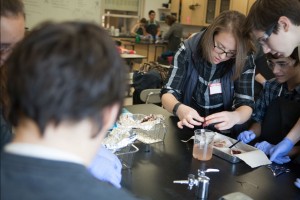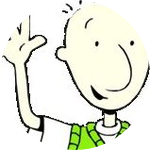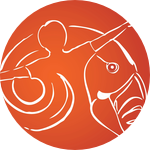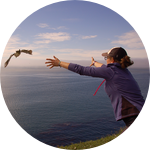Project Results
Hi everyone, I know it's been a while but our results have been published in Marine Pollution Bulletin - please see link for the article!
About This Project
Plastic debris is choking our ocean ecosystems, including the Bering Sea. In this region, the seabirds and their prey mistake plastics for food, resulting in exposure to harmful plastic-associated chemicals like phthalates. We do not know the extent of phthalate exposure nor their effects on seabird health. We aim to build knowledge of phthalate exposure in Bering Sea seabirds to understand effects on reproduction, survival, and ecosystem health.
Ask the Scientists
Join The DiscussionWhat is the context of this research?
The toxic effects of chemicals from plastics are a concern for ocean ecosystems. Globally, at least 44% of seabird species are known to ingest plastics (Rios et al. 2007). This project investigates plastic marine debris impacts on seabird communities in the Bering Sea, particularly exposure to harmful plastic-associated compounds such as phthalates, known hormone disrupters. Our first goal is to quantify phthalate exposure in Bering Sea seabirds, leading to more studies investigating phthalates’ effect on seabird health, and, more broadly, ecosystem health. Additionally, this project will play a critical role in the knowledge framework as scientists compile knowledge of the extent of phthalate exposure in seabirds globally. Please check out the lab notes for more project details/info!
What is the significance of this project?
Scientists are beginning to investigate the extent of microplastic ingestion and phthalate exposure in wildlife, and phthalates' negative impacts on health. This project provides new information on these issues. Seabirds are model organisms for studying contaminants like phthalates, as they occupy many positions within the marine food web, including high trophic levels. They are exposed to wide ranges of contaminants and are prone to bioaccumulation. Biologists are now aware of the threats phthalates pose to seabirds, as they are hormone disrupters, and our preliminary data indicate that Bering Sea seabirds are exposed to these chemicals. Exposure can negatively impact seabird health so much so that it can be one of the underlying mechanisms for seabird population decline.
What are the goals of the project?
More research is required to better understand the long-term consequences of phthalate exposure, but quantifying phthalate levels is the first step towards a better understanding, which we are currently doing with Bering Sea seabirds. We collect seabird specimens from the Bering Sea region, examine stomach contents for plastic ingestion, and during necropsy, collect tissue samples for chemical analyses. Tissues are muscle, liver, reproductive, feather, and preening oil. The six phthalates we quantify are DMP (Dimethyl phthalate), DEP (Diethyl phthalate), BBP (Benzyl butyl phthalate), DBP (Dibutyl phthalate), DEHP (Diethyl hexyl phthalate), and DnOP (di-n-octylphthalate). We regularly share results in classrooms and at conferences, and will publish results in a scientific journal.
Budget
This budget item covers the final step in our research project by allowing us to quantify concentrations of phthalates in seabird tissues.
We have already collected tissue samples from seabirds, and are collecting samples this summer with the help of fellow scientists and community members in the Western Aleutian Islands, Pribilof Islands, and Kodiak Island.
Analysis of tissue samples in the analytical chemistry laboratory at the University of Alaska Anchorage is our largest budget item. Determining the concentrations of phthalates in tissues is a very complicated process, and requires the expertise of highly skilled chemists that are members of our research team. Other components of the project are covered through graduate student stipends and volunteer hours.
For more information about the analytical chemistry laboratory at the University of Alaska Anchorage, please visit this website:
Endorsed by
Meet the Team
Affiliates
Veronica Marie Padula
I'm currently working on my PhD in Alaska at the University of Alaska Anchorage/Fairbanks. I investigate how plastic marine debris impacts seabirds in the Bering Sea. I've lived in Alaska since 2008, and love everything about this place, including the animals that inhabit some of the most remote and wild parts of the state. I love getting out there and telling other people about how amazing this place is, and how awesome seabirds are! Seriously, they are awesome, they can tell us so much about the health of the ocean. I love sharing their story with everyone.
Additional Information
Our research program contains a heavy education and outreach component that we would like to expand. We have visited K-12 classrooms in Anchorage, Chugiak, Eagle River, Palmer, Wasilla, Talkeetna, Houston, Soldotna, Fairbanks, North Pole, Wrangell Island, Unalaska, St. Paul, and Naknek to inform students about the global issue of marine debris and to promote environmental stewardship. We would like to expand our outreach efforts to visit more classrooms across Alaska, and create mechanisms through which we can educate students outside of Alaska. One such mechanism is the creation of a YouTube channel with informative short videos (< 5 min) about our work, highlighting the beauty of the Bering Sea ecosystem, the animals that live in it, and the reasons we work to protect this ecosystem. As very few people have access to this region, our videos will provide a unique opportunity to inform a more global community about the value of Bering Sea ecosystems. Furthermore, other videos will include ideas for students on how they can get out and become environmental stewards, and suggestions for reducing the amount of waste they create. The channel will also include a link to a website we will create where teachers can access marine debris lesson plans, follow a blog about ongoing marine debris and plastics research, and contact us to schedule classroom visits.
For a few more stories about our work, please check out these articles and blogs:
Polaris Students Work with UAA Grad Student to Find Plastic in Seabird Stomachs
Seabirds Are Dumping Pollution-Laden Poop Back on Land

The seminar in the link below was held in Cordova, Alaska, in October 2015 (many updates to the work since then) in collaboration with the Prince William Sound Science Center, Tongass National Forest, Alaska SeaGrant, and the local Audubon Alaska chapter.
Project Backers
- 45Backers
- 107%Funded
- $2,149Total Donations
- $47.76Average Donation



